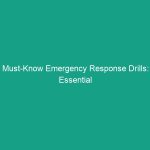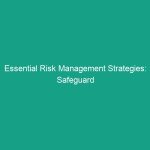Introduction
Good morning team,
Today, we’re going to discuss an essential topic that affects every one of us in the workplace: identifying unsafe conditions. Understanding how to recognize these conditions is crucial for maintaining a safe and productive Environment. Unsafe conditions can lead to accidents, injuries, and even fatalities. By being proactive and aware, we can ensure our workplace remains safe for everyone.
Understanding Unsafe Conditions
Unsafe conditions refer to any factors in the workplace that can lead to accidents or injuries. This includes anything from faulty equipment to hazardous materials. Recognizing these conditions is vital for preventing incidents that could impact our health and Safety. One common misconception is that only trained Safety personnel are responsible for identifying Hazards; however, every employee plays a vital role in maintaining safety Standards.
Key Hazards, Risks, and Safety Considerations
Identifying unsafe conditions involves understanding the specific hazards and risks present in our work environment. Here are some common hazards to be aware of:
- Slips, Trips, and Falls: Wet floors, uneven surfaces, or cluttered walkways can lead to serious injuries.
- Electrical Hazards: Exposed wiring, overloaded circuits, and improper use of extension cords are significant risks.
- Machine Safety: Unguarded machinery or improper use of equipment can result in severe injuries.
- Chemical Exposure: Lack of proper labeling or inadequate Training on handling hazardous materials can be dangerous.
- Ergonomic Risks: Poor workstation design can lead to musculoskeletal disorders.
Ignoring these safety protocols can have real-world consequences, including injuries that could lead to missed workdays or even long-term disabilities. It’s important to stay vigilant and proactive in identifying potential hazards.
Best Practices, Procedures, & Actionable Advice
Now that we understand the importance of identifying unsafe conditions, here are 10 must-know tips to help you spot these hazards effectively:
- 1. Conduct Regular Safety Walks: Take time each week to walk through your work area and look for potential hazards. Bring a checklist to ensure you don’t miss anything.
- 2. Pay Attention to Your Environment: Stay aware of changes in your surroundings, such as new equipment or alterations in layout that may introduce new hazards.
- 3. Report Issues Immediately: If you notice a hazard, report it to your supervisor right away. Don’t wait for someone else to address it.
- 4. Participate in Safety Training: Engage in safety training programs offered by your company. These will provide you with the knowledge to identify and address unsafe conditions.
- 5. Use the Right Equipment: Always use Personal Protective Equipment (PPE) and ensure it is in good condition to minimize risks.
- 6. Keep Workspaces Organized: A tidy workspace reduces the risk of accidents. Make sure tools and materials are stored properly.
- 7. Be Aware of Weather Conditions: If you work outside, be mindful of weather-related risks, such as ice, snow, or extreme heat.
- 8. Encourage Open Communication: Foster a culture where employees feel comfortable discussing safety concerns without fear of reprisal.
- 9. Review Incident Reports: Look at past incidents to understand what went wrong and how similar situations can be avoided in the future.
- 10. Stay Educated: Keep up to date with industry Best Practices and safety Regulations to enhance your understanding of Workplace Safety.
Implementing these tips can significantly reduce the risk of accidents and create a safer working environment for everyone.
Regulations, Standards, and Compliance
In the realm of Workplace Safety, regulations and standards play a crucial role. Organizations like OSHA (Occupational Safety and Health Administration) provide guidelines to help employers maintain safe working conditions. Compliance with these regulations is not just a legal obligation; it also protects employees from potential harm. Familiarize yourself with the relevant standards applicable to your specific industry and ensure that your workplace adheres to them.
Employee Engagement & Discussion
Let’s take a moment to discuss this. Have you ever encountered a safety hazard in your area? What steps did you take to address it? Feel free to share your experiences, as they can help us all learn and grow in our safety practices.
Conclusion & Key Takeaways
In summary, identifying unsafe conditions in the workplace is crucial for maintaining a safe environment. Remember the 10 tips we discussed today and apply them in your daily activities. By prioritizing safety, we not only protect ourselves but also our coworkers and the overall integrity of our workplace. Thank you for your attention and commitment to keeping our work environment safe.


